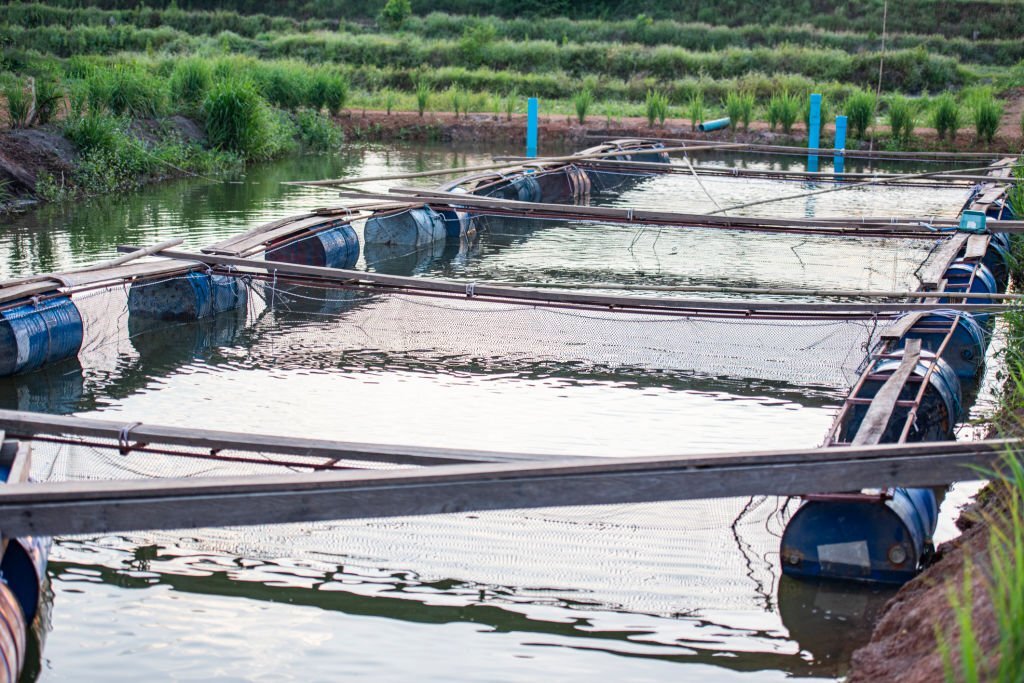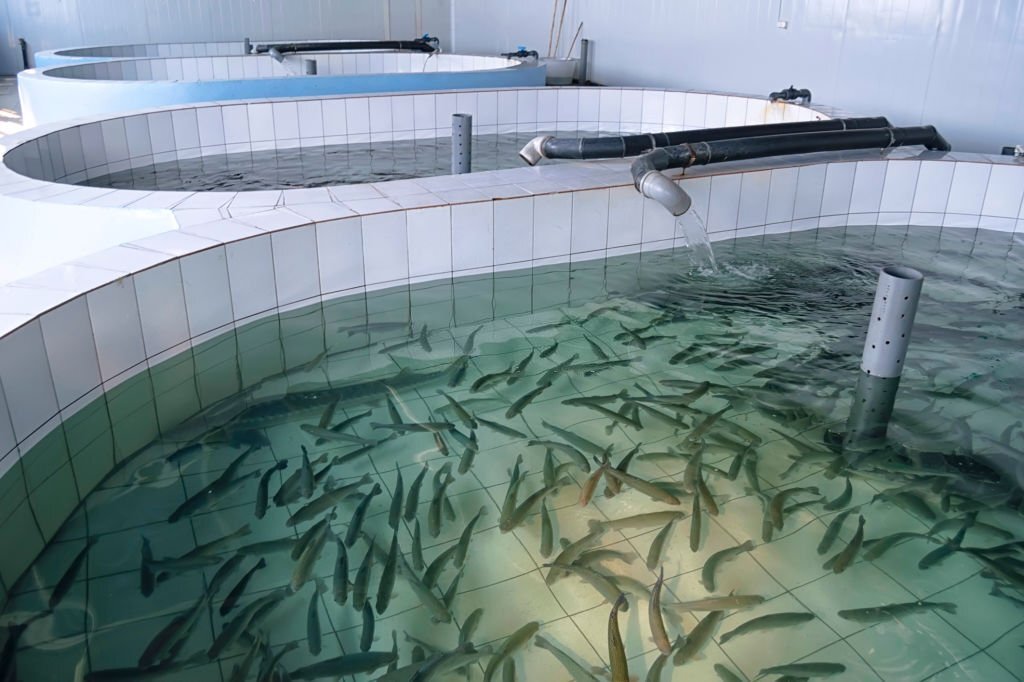The fish farming business is a major source of protein today. And it has been a major source of income in the agricultural sector. Moreover, almost everyone in the world consumes fish in one meal or the other.
Don’t be shocked to find out that fish farming has helped nations with food insecurities to provide nutrition for more people. According to the Food and Agricultural Organization of the United Nations (FAO), the fisheries and aquaculture sectors have been increasingly recognized for essential contributions to global food security and nutrition in the twenty-first century. However, research shows that with the increase in global population and urbanization, per capita seafood consumption has also increased. Fishes are of different types and species, which is also a determinant of the fishing method to adopt.
Moreover, Pisciculture is a sector of aquaculture where fish are raised in artificial or natural containment to sell for consumption. Most of the fishes that are reared include Salmon, Carp, CatFish, and Tilapia. Currently, China ranks highest as the country most involved in fish farming, producing over 62% of the world’s fish farms, while Nigeria and Egypt rank high in fish production in Africa.
Fish farming is a lucrative business if understood properly. some farmers raise fish in net pens, which is a high risk to take because such fishes are susceptible to predators.
Below we’ll be looking through the major types of fish farming and having a practical breakdown of the steps needed to start a catfish farm. Fish farming is grouped into two types, the Extensive and the Intensive system.
TYPES OF FISH FARMING
1. Extensive Fish Farming System

In the extensive fish farming system, fish is cultured in natural fish habitats and modified by fish farmers to accommodate the fish. It is a semi-natural habitat where others) organisms that can serve as fish food, such as earthworms, insects, and Aquatic plants, also reside. This type of fish farming is referred to as extensive because it allows the cultivation of different kinds of fish and requires special fish farming equipment to increase production.
The advantage of the extensive type of fish farming is; You don’t need to put in so much labor in this system because of their semi-natural environment. There’s also a reduced cost of fish food since they get most of it from the water. Also, the fishes are relatively cheap because there is less cost of production during farming. However, there are some disadvantages, such as the yield in extensive fish farming is low because the fish farmers do not get considerable revenue, it also requires a large body of water, and not all fishes are easy to farm in the extensive system the easiest are Carp, Tilapia, Catfish.
2. Intensive Fish Farming system

One of the reasons intensive fish farming is preferred is because of its high yield. This system allows the cultivation of many species of fish in an enclosed environment, such as an artificial pond or a fish tank. You will have a high yield from an intensive system. Even though this farming system does not require a large area, you can use a small space. In this system, it is essential to have a plan to constantly purify the water used for cultivation, a lack of that can lead to the loss of the fish.
However, the disadvantages of intensive farming are that it is expensive to manage and requires large capital to start. Fishes have a hard time developing due to the limited space. Also, the use of chemical fertilizers can contaminate the water.
There are other types of fish farming systems, some of which include Ranching and Flow-through fish farming systems.
HOW TO START FISH FARMING
The fish farming business involves the rearing and cultivation of fish by fish farmers. You can do this commercially in a controlled or semi-controlled environment to increase productivity. To start a Fish farm it is necessary to have a plan and carry out some research however there are a couple of steps you need to take.
Step 1: Select the type of Fish
The specie of fish to raise is the first thing you should decide when starting your fish farming business. The success of the fish farming industry is significantly influenced by the choice of fish species. when choosing a fish specie, you want to put some factors like Market demand, availability, and maintenance cost into consideration. However, here is a list of fish species you can use for your fish farming business.
- Salmon Fish
- Tilapia fish
- Carp Fish
- Catfish
- Crab
Step 2: Learn basic skills needed for Fish Farming
When starting a fish farming firm, it’s vital to have basic fish farming skills. There are certain farms that offer training on fish farming. You can enroll in those courses to gain the right skills, knowledge, and understanding. Moreover, you can take a job role in a fish farm to get familiar with the business and acquire the necessary skills before you start out. Working on a fish farm you will learn how to regulate water quality, market products, feed animals, and process food.
Step 3: Calculate your Cost (Capital)
Two different forms of capital investments used in the fish farming industry include operating and fixed capital expenses. Fixed capital expenses include costs such as pond crafting, Land securing, plumbing, tanks, oxygen meters, and many more. While the operating costs include expenses such as fish feed, electricity, fuel, medicine, transportation, and other maintenance costs.
Step 4: Select the right Location
Choosing the right land is a major process of a successful fish farming business. However, when choosing a land, ensure to watch out for some of these features
- Size: you want to pick a space that’s big enough to accommodate your fish especially if you want to have separate structures for different sizes, or maybe you want to separate them by gender.
- Water Supply: As you know water supply is very important when it comes to fish farming, fishes survive on water, so you want to ensure you are getting a space with enough water supply.
- Soil type: The quantity and quality of fish you obtain are directly impacted by the soil quality. So pick a location with good soil. You need to examine the soil to make sure that it contains at least 20% clay. You should also look at the relative level of the space. It’s crucial to make sure that this area won’t flood quickly. By doing this, you can stop soiled water from getting into the bond.
Step 5: Fish And Equipment Purchase.
The process of launching/opening a fish farm is just like that of other businesses. You need to ensure you get a reliable fish supplier. Moreover, some of the basic equipment and tools required for the fish farming business are listed below
- Fish graders
- Fish tanks/Pond
- Pump
- Fish counters
HOW CAN YOU SET UP YOUR CATFISH FARM?
Let’s take a look at the steps involved in the process
Catfish farming is one of the common types of fish farming because, with the right expertise, it is easy to start and manage. We’ll be going through some of the steps you will need to take before venturing into the business.
Getting a piece of land to cultivate the fish is the first step. Although aside from using a pond for your farming, you can as well use tanks or drums. If you’ll be using an earthen pond, then ensure that you fertilize the soil because an unfertilized pond can harm the fish. It is also important that whatever water will be used for any kind of pond system should be sterilized. Next, is getting the fish, you can start with fries (newly hatched fish), Fingerlings ( 0-4 weeks), or Juveniles (4-8 weeks). However, ensure that you get your fish from a reliable source, it’s also not a bad idea to connect with other Catfish farmers to get advice.
Change your water regularly, preferably once every two days, and do not overcrowd your pond. Catfish do not like stressed conditions, so check the water’s temperature, pH, and alkalinity levels. The pH levels of the water should always be neutral which is pH 7, you can determine this by using a water pH meter. Feed them in the morning and evening, they eat twice daily to survive well.
Catfish are usually ready to be sold at the age of 3 months when grown from fingerlings and usually weigh 300-400 grams. But Catfish can weigh up to 500-700 grams when they are kept past 5 months. However, if you’d like to grow your fish for hatchery then they can be left to grow for up to a year.
Wrapping Up
One of the main issues in the modern digital environment is unemployment. Fish farming will provide a lot of jobs. It will present employment prospects for farmers, sellers, and transporters. The global fish farming industry has benefited from the rising demand for fish as food. Additionally, a lot of individuals think that eating fish has several advantages. As a result, the seafood industry always has a steady and reliable market.
Therefore, it is important you have access to the right information. From the source of fish to the source of the fish food, to the workers who will be in charge of taking care of the fish. When it comes to the fish farming industry no one is an island of knowledge, so you don’t want to segregate yourself from other fish farming business owners. It is an industry that requires high networking with other professionals. Attending agricultural events, and fish farming business exhibitions, are great places to Network. Moreover, being a part of an agricultural association, a piscicultural association would open you up to opportunities in the industry and also help you meet your basic needs in the industry.



